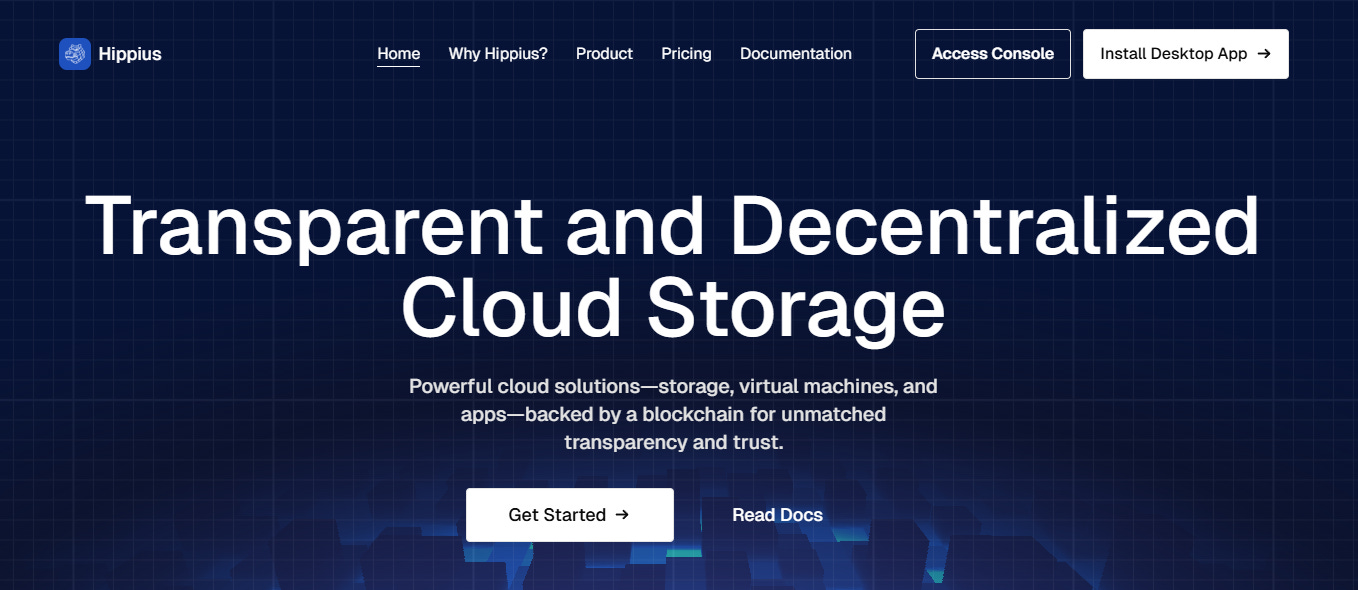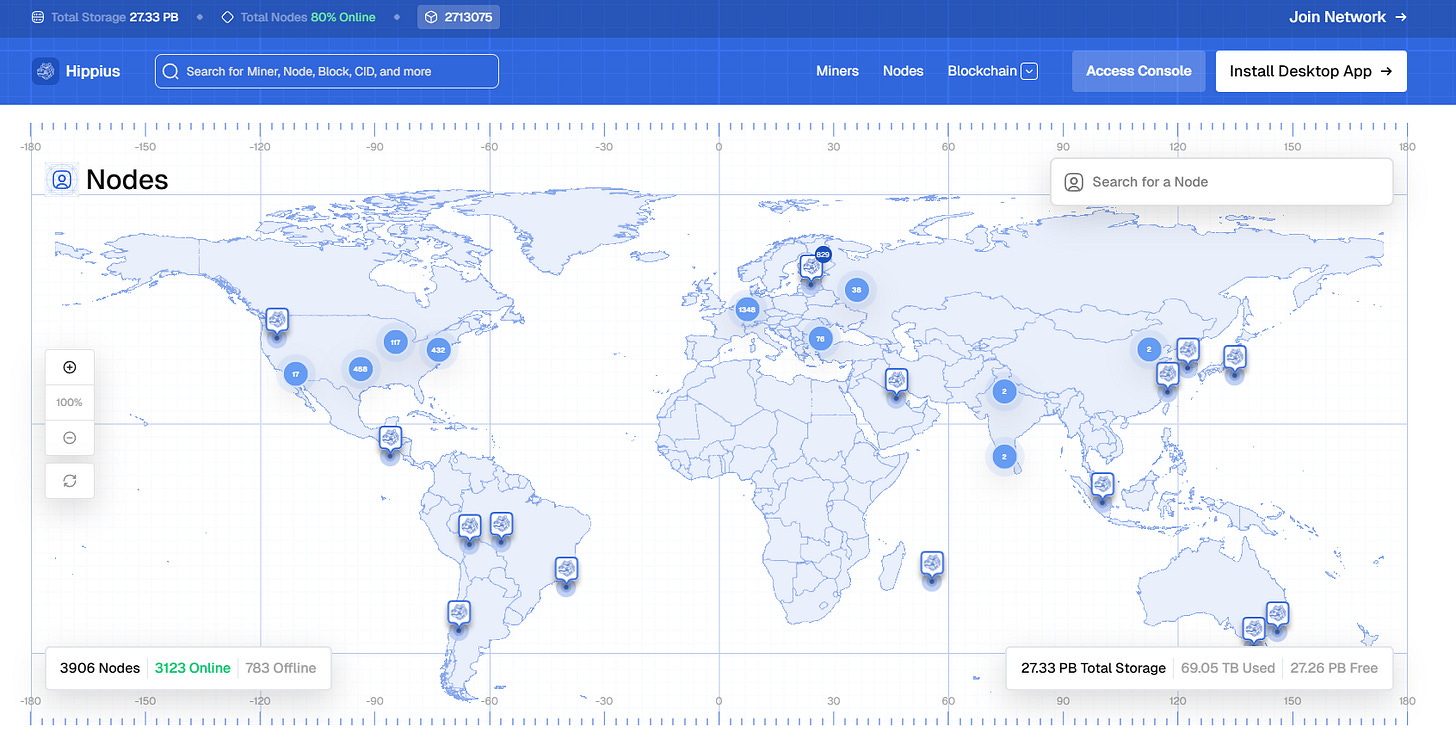Hippius Subnet 75: Your Data Deserves Better Than Google Drive
Why My Mother-in-Law's Videos Finally Convinced Me to Switch
I hit my Google Drive limit again last week.
And it wasn’t even because of the storage use on my business account.
The crime of digitally hoarding family photos takes down another criminal, and a pretty little popup on my screen offers the easy way out…
Upgrade to the next tier at 3 times the price and get an extra 2TB of data with bonus advanced appointment scheduling!
Wow what a deal!
At this rate I might survive another year of my mother in law uploading 3 minute long videos of my kids wrestling in her living room while under her care.
And seeing as Google seem to change their storage limits so often I might fall foul of these limits even sooner.
But this little issue isn’t just my problem.
It’s a symptom of a system where we’re forced to trust our most valuable digital assets to corporations that can change the rules whenever they want.
And pay more each year while we’re at it.
Remember in my last issue when I mentioned how your wedding photographer would be interested in Hippius (Subnet 75) for decentralized storage at up to 2,386 times cheaper than alternatives like Dropbox?
Let’s look what that actually means and why it matters for all of us, not just professional photographers or pensioners narrating their grandchildren’s lives on video.
The Storage Trap We’re All In
We’ve been conditioned to believe that cloud storage must be expensive, centralized, and controlled by tech giants. Here’s the reality:
The cost keeps rising: Google Drive now charges $9.99/month for 2TB, up a considerable amount from when I first signed up.
The privacy keeps shrinking: Your files are scanned for ads, training data, and who knows what else.
The control keeps disappearing: Terms change overnight, storage limits mysteriously appear and your data becomes less accessible.
Hippius isn’t just another blockchain storage project: it’s Bittensor’s solution to a problem we all face but rarely discuss.
What Hippius Actually Is
Let’s cut through the technical noise. At its core its this simple:
Hippius turns unused hard drive space across the globe into a secure, distributed storage network that pays providers in TAO while charging consumers fractions of what centralized services charge.
Unlike traditional cloud storage where corporations profit from your data, Hippius creates a marketplace where:
People with extra hard drive space earn TAO for contributing capacity
Consumers pay in TAO for reliable, private storage
Validators ensure files are stored correctly and reward providers fairly
The network is already processing petabytes (if like me you can’t count that far, its thousands of TB) of data with real economic activity happening every day.
The Real Cost Breakdown
Let’s get concrete about that “up to 2,386 times cheaper” claim. That is at the enterprise level where storage costs hit eye watering levels.
But what does it actually mean in practice for consumers and small businesses?
This isn’t theoretical pricing: it’s what early adopters are actually paying.
The reason? Hippius leverages unused storage capacity worldwide rather than building expensive data centers.
But it’s not just about cost. It’s about:
True ownership: Your files aren’t subject to arbitrary takedowns
Privacy by design: No scanning for ads or training data
Resilience: Files are distributed across multiple nodes, making them more durable
Egress-Free Cloud: All data transfers are included in the base price so you don’t have to pay to access the files you actually own
The Awareness Framework Applied to Storage
In Issue 13, I introduced Eugene Schwartz’s 5 stages of awareness to diagnose where beginners get stuck with Bittensor. Let’s apply this specifically to storage solutions:
Stage 1: Problem Unaware
“I just use Google Photos, what’s the issue?”
You’ve never thought about where your data lives or who controls it. You trust the platform implicitly and see no problems with the status quo.
Stage 2: Problem Aware
“I’m worried about my photos being scanned for ads but don’t know alternatives”
You’ve heard about privacy concerns or hit storage limits, but feel trapped by convenience. You know something’s wrong but don’t see a viable path forward.
Stage 3: Solution Aware
“I’ve heard about decentralized storage but how does it actually work?”
You know alternatives exist but can’t bridge the gap between concept and reality. The technical details feel overwhelming and you’re not sure if it’s worth the switch.
Stage 4: Product Aware
“I get that Hippius is decentralized storage, but how do I use it?”
You understand Hippius conceptually but need clear onboarding steps. You’re ready to try it but need help taking that first step.
Stage 5: Most Aware
“I’m running a storage node and using Hippius for all my media”
You’ve fully integrated Hippius into your workflow and understand how to maximize its value. You might even be contributing to the network as a provider.
Where do you fall on this spectrum? Be honest with yourself, this determines exactly where to focus your Hippius journey.
I’m now starting to use it for my family photos, Google isn’t going to hold my data to ransom anytime soon.
Common Misconceptions: Separating Fact from Fiction
As Hippius adoption grows, several key questions keep emerging. Here’s what the data shows:
Reliability Through Redundancy
Hippius achieves higher reliability than traditional cloud storage through its distributed architecture. Your files are broken into encrypted shards and stored across multiple nodes. To lose data, multiple independent providers would need to fail simultaneously. Which is far less likely than a single data center outage.
User Experience & Accessibility
Hippius prioritizes user experience alongside technical innovation. The web interface (hippius.com) is remarkably clean, and the desktop client handles automatic backups with minimal configuration.
Economic Sustainability
The network creates genuine value for all participants. Providers earn TAO based on how much storage they contribute and how reliably they maintain it. This creates a self-sustaining economy where supply meets demand organically.
Market-Driven Innovation
What sets Hippius apart is how it leverages Bittensor’s unique market mechanism. Storage isn’t just “on the blockchain”, it’s part of a living economy where prices adjust based on real demand, not fixed subscription models.
My First Impressions: Real World Testing
I committed to moving 50GB of non-critical data to Hippius in the last week. Here’s what I discovered:
Setup took 10 minutes - The desktop client installed smoothly and guided me through the initial configuration
Speed was comparable - Upload/download speeds were similar to Google Drive (slightly slower for first upload, then comparable)
The pricing calculator is eye-opening - My current 0.5 TB usage would cost $10/month on Google Drive but only $3 on Hippius
UI Highlights and Future Improvements - The interface strikes a balance between power and simplicity, though some technical terms like IPFS and S3 storage could use clearer explanations for non-technical users (like our wedding photographer earlier).
Most importantly, I felt a sense of ownership I haven’t experienced with centralized services. No vague terms of service or hidden data policies, just a clear marketplace where I control my data.
The Big Picture: Why Storage Changes Everything
I’ve previously written about “subnet-pilling” people instead of “TAO-pilling” them. Hippius is the perfect example of why this matters.
You don’t need to understand Bittensor’s consensus mechanism to benefit from cheaper, more private storage. Just like you don’t need to understand how electricity works to flip a light switch.
Storage is foundational for the open AI revolution. Without affordable, decentralized storage:
AI developers can’t share massive datasets
Researchers can’t collaborate effectively
Innovation gets bottlenecked by corporate-controlled infrastructure
Hippius solves this problem at the infrastructure level, creating the bedrock upon which other subnets can thrive.
Take the Hippius Challenge
I’m challenging you to take one concrete step:
Move one folder of non-critical files to Hippius and document your experience.
Whether it’s old project backups, family photos you’ve already stored elsewhere, or work documents you’re archiving: just pick something small and make the switch.
If you like, hit reply and tell me:
How long did setup take?
What surprised you?
Would you do it again with more important files?
The most powerful technologies don’t shout about their architecture. They simply solve real problems better than the alternatives.
This isn’t about migrating your entire digital life overnight. It’s about taking the first step toward data sovereignty while keeping more of your money. Your experience will help others break free from expensive cloud storage.
And I will work on educating my mother in law on how to delete videos from the family storage account.
Are you ready to reclaim control of your data?
Until next time.
Cheers,
Brian



